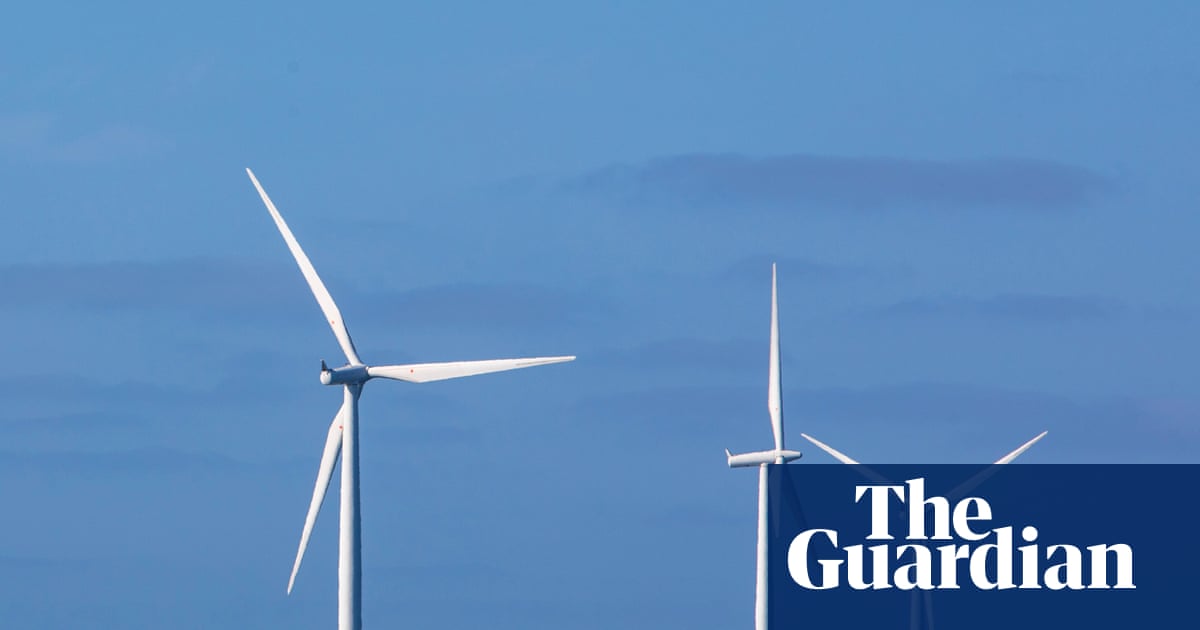
The number of green energy tariffs available to British households has plummeted during the cost of living crisis as bill payers choose affordability over sustainability, according to industry data.
Energy suppliers have pulled tariffs advertised as “green” from the market since Russia’s invasion of Ukraine in February 2022 triggered a global energy crisis that pushed gas and electricity bills to record highs.
Green tariffs, which are typically more expensive than standard deals, made up about 85% of the UK’s supply market in 2022 as climate-conscious households opted to pay a premium for deals backed by renewable energy.
But industry data, commissioned by the Guardian, has revealed that energy suppliers have radically scaled back their green offerings, which now make up about a fifth of the tariffs on the market.
William Mann-Belotti, an analyst at Cornwall Insight, an energy consultancy, said demand for tariffs backed by renewable energy had fallen because “green credentials aren’t a higher priority than cost … Amid a cost of living crisis, it becomes difficult to sell pure green tariffs at a premium”.
Energy tariffs marketed as green typically promise to supply renewable energy rather than power from a mix of sources provided to the UK’s power grids, either by matching each unit of energy sold with a renewable energy certificate bought in an open market, or through a direct deal with a renewable energy generator.
The consultancy found that the number of green dual-fuel tariffs has halved in the last year alone. Last month there were 13 dual-fuel green tariffs available to consumers out of 57, compared with last summer when there were 24 green tariffs on offer out of 56 dual-fuel energy deals.
All the energy deals now advertised as “green” on the uSwitch price comparison website, including dual-fuel and separate gas and electricity tariffs, have made up just 18% of the overall total this year, data from the switching service shows.
Before Russia’s invasion of Ukraine, green energy deals made up 85% of all energy tariffs on offer on the price comparison site, according to uSwitch data.
“Consumer choice plays a strong role in what is offered on the market, so cost concerns might see people switching away from more expensive green tariffs. This would therefore reduce the demand for them,” Mann-Belotti said.
“Also, there are other ways for people to reduce their carbon footprint, with quite the increase in solar PV installations in recent years.”
after newsletter promotion
However, the Uswitch data revealed some good news for climate-conscious households. Although there are fewer green tariffs on the market today, the deals available are “greener” than they used to be.
Uswitch grades each tariff marketed as green to help customers avoid greenwashed deals. In 2021, fewer than 15% of tariffs received a gold- or silver-standard rating from the switching service, but last year nine of the 10 green tariffs on its site were ranked at this level, leaving a single tariff ranked bronze.
The stronger green credentials behind these tariffs reflect a shift away from using renewable energy certificates to guarantee the origin of the electricity – called “greenwashing” by consumer groups and investigated by the government.
Instead, suppliers are opting to buy clean energy directly from renewable energy projects. Others sell energy that is cheaper when there is more renewable energy across the country as an incentive to use more clean power when it is available.








